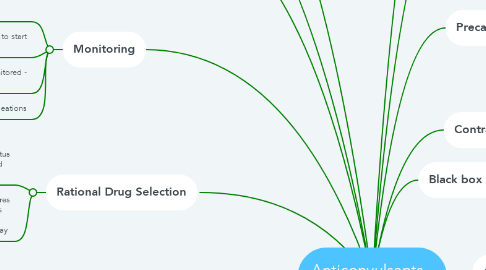Anticonvulsants - Hydantoins
by Susan Morgan

1. Comments
2. Cost
2.1. $13-20
3. Patient Education
3.1. take medication exactly as prescribed and avoid missing doses
3.2. do not stop abruptly
3.3. avoid alcohol. urine may be discolored
4. Monitoring
4.1. pt assessed for hypersensitivity - occurs 3-8 weeks - include fever, skin rash, lymphadenopathy
4.2. CBC, urinalysis, liver function prior to start and then every few months
4.3. plasma levels should be monitored - narrow therapeutic index
4.4. suicide ideations
5. Rational Drug Selection
5.1. hydantoins not first-line treatment of status epilipticus, but IV phenytoin can be used for control of grand mal seizures.
5.2. phenytoin - may worsen absence seizures fosphenytoin - used for short term (less than 5 days) managment of seizures. ethotoin prescribed in 4-6 doses per day
6. Clinical Use
6.1. First line treatment of choice for tonic-clonic and partial complex seizures. Least sedating .
6.2. Phenytoin most commonly uses
7. Drug Interactions
7.1. allupurinol, cimetidine, diazpam, disulfiran, alcohol, phenacemide, succinimides, valproic acid - increase plasma levels
7.2. barbituates, carbamzzepine, alcohol (chronic), theophylline, antacids, calcium - decreased plasma level
7.3. corticosteroids, dicumaron digitoxin, doxycycline, haloperidol, methadone - decreased effect of interaction drugs
8. Black box / Preg Category
8.1. pregnancy cat d - overall risk 10%
9. Contraindications
9.1. hypersensitivity - reactions fever, rash, arthralgias, and lymphadenopathy
10. Pharmacodynamics
10.1. inhibit and stabilize electrical discharges in the motor cortex of the brain
11. Pharmacokinetics
11.1. A&D: oral admin. absorption - small intestine - slow - rates varies with form of drug. enter brain quickly and then are redistributed to other body tissues, saliva, and breast milk
11.1.1. protein bound
11.1.2. rate and degree of absorp from IM is erratic
